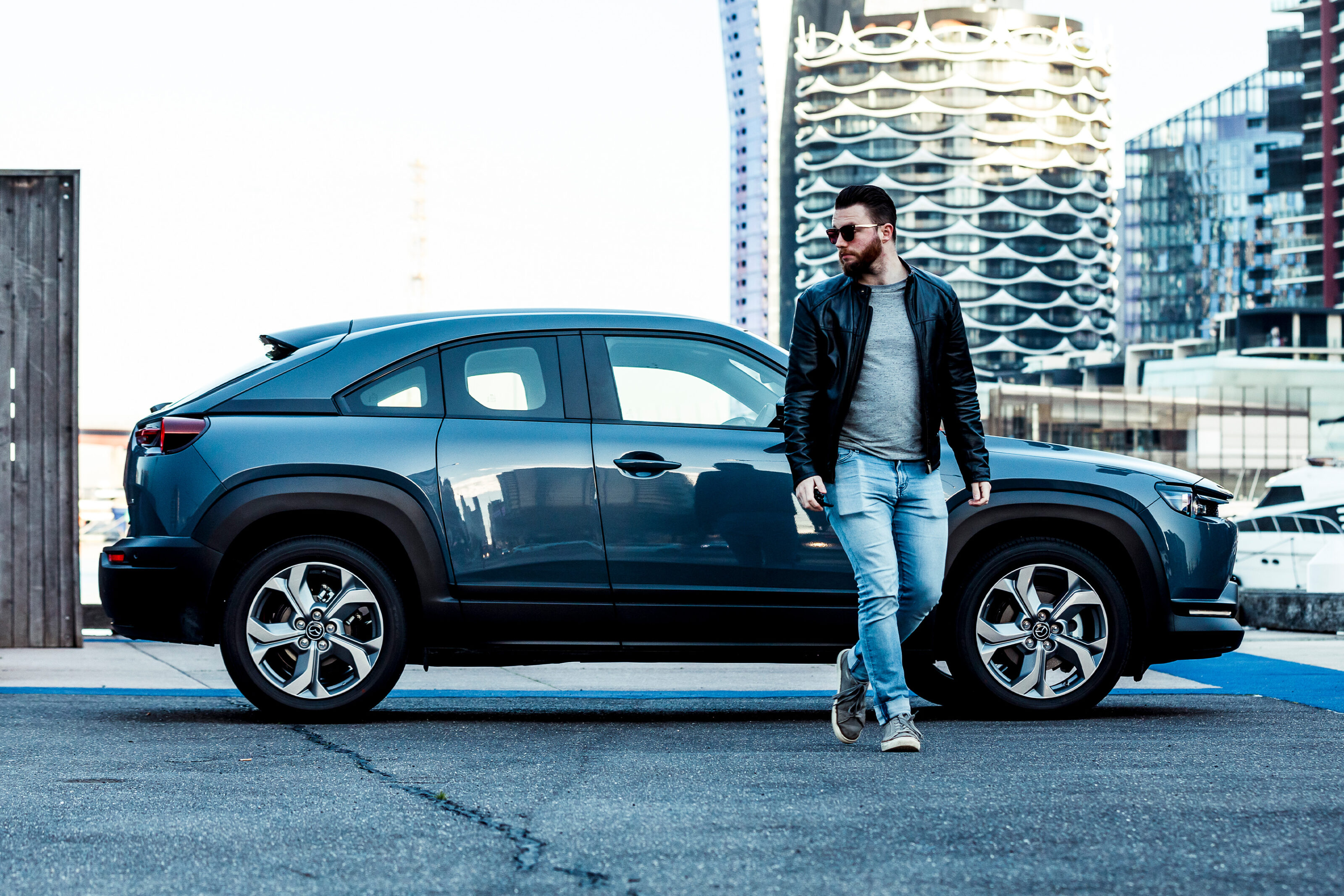Perhaps I’m a pessimist, but whenever I see the word ‘experiment’ associated with anything I can’t help but feel a significant degree of risk is implied. It was, after all, an experiment that turned a Ukrainian power station into giant nuclear bonfire for a few weeks in 1986, and some years later my daring mango and anchovy salad was arguably just as toxic.
That said, where would we be as a species if we didn’t accept the potential risks and experiment? Edward Jenner would have never injected a small boy with pus collected from a sick milkmaid’s hands, and Colonel John Stapp wouldn’t have strapped into a rocket sled and subjected himself to more than 46 g of deceleration.
To any human with at least one functioning cerebral lobe, both ideas are fabulously stupid but fortunately neither of the men asked for a second opinion. As a result, we now have incredible lifesaving safety technology in cars and a coronavirus vaccine. Experiments are inherently risky but an essential part of progress.
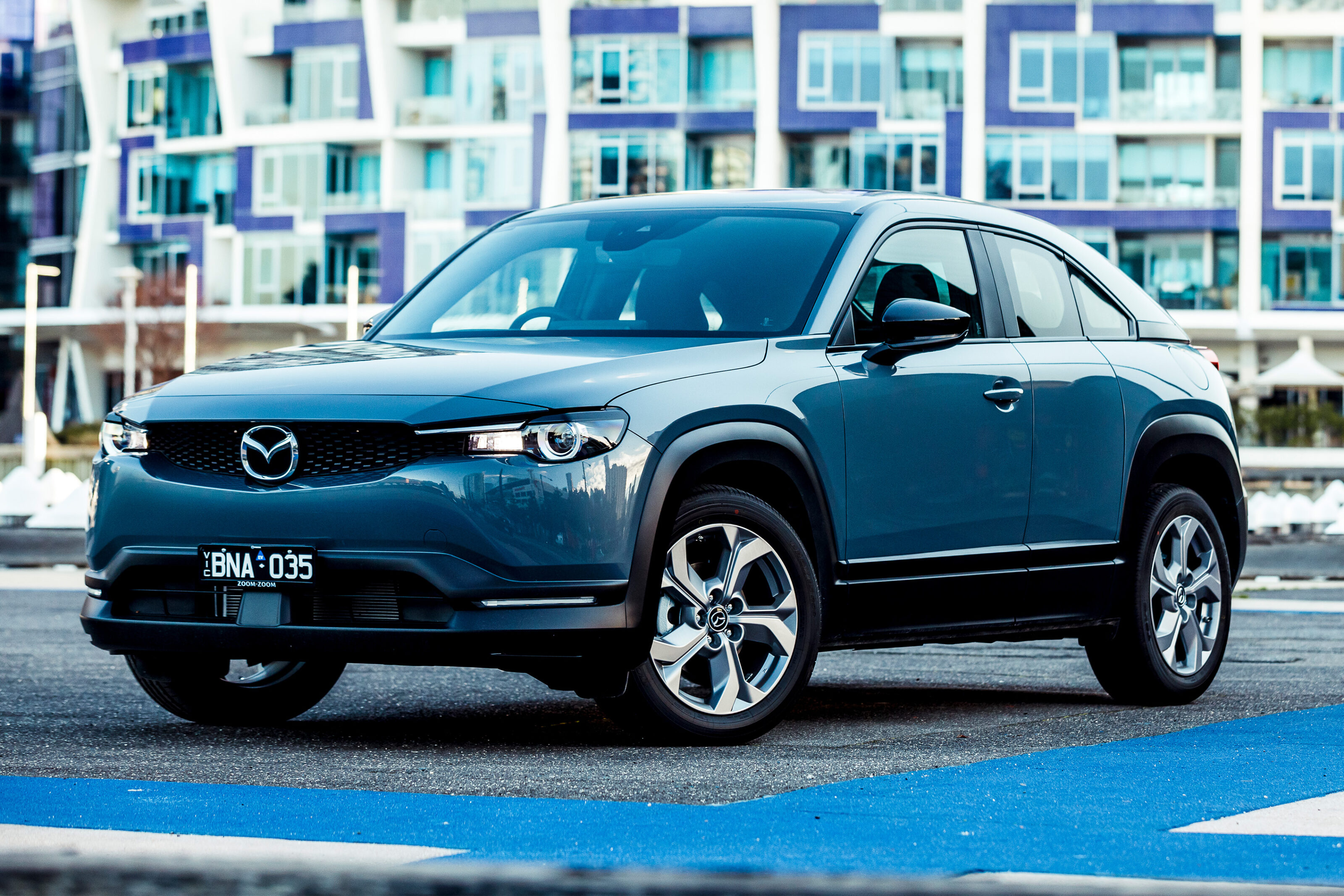
Mazda not only understands this but reserves a particular boot badge exclusively for its most transformative and empirical models – MX.
It stands for ‘Motoring eXperiment’ and examples don’t come along very often, while even fewer have successfully run the gauntlet from concept car to production model. From the very first MX-81 concept in 1981, just three product lines have emerged wearing the moniker as a vehicle you could actually buy in a Mazda showroom … until now.
From April 2021, the MX-30 will appear in Australian dealerships charged with the task of taking the Japanese brand, once again, into new territory and I’ve just driven it. But before I tell you if it does the MX thing, here’s how MX-30 Program Manager Tomiko Takeuchi defines the badge.
“MX models are something we introduce as a symbol of Mazda’s new challenge,” she said. “The (MX) models have to be creating new values which defy the conventions of the automotive industry at that time. That’s the requirement.
“It exceeds just the mere functional value of being a transportation tool.”
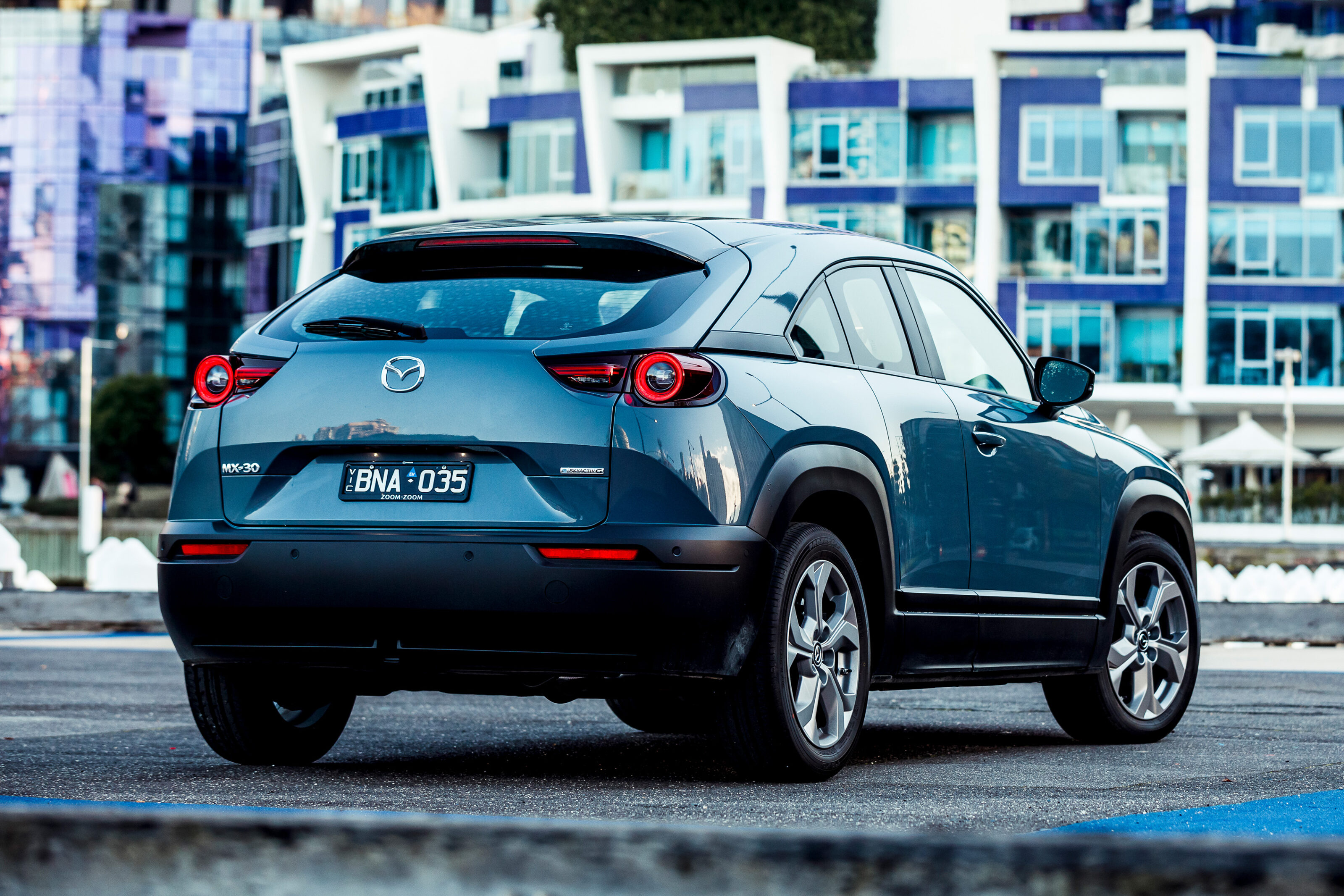
That’s a seriously big brief to nail and explains why not many Mazdas have ever been christened MX, but the newest inductee to the hall of MX-cellence certainly makes a big impression with its looks. The company says its Kodo design language is a set of design ‘principles’ not rules, which is lucky because, if they were, the MX-30 would have shamelessly broken virtually all of them.
The traditional eight-point grille has been narrowed and rounded into a slender slot that connects radical LED headlights and introduces sharp edges and lines throughout. The signatures continue all over with interesting details that are pleasing in their own right but combine for a vehicle that is paradoxically immediately recognisable as a Mazda but simultaneously looks nothing like one.
Take a step back and the MX-30 has a profile more akin to one of Mazda’s previous coupes rather than an SUV and there’s a nod to the RX-8 sportscar in the cool suicide (sorry, ‘freestyle’) rear doors.
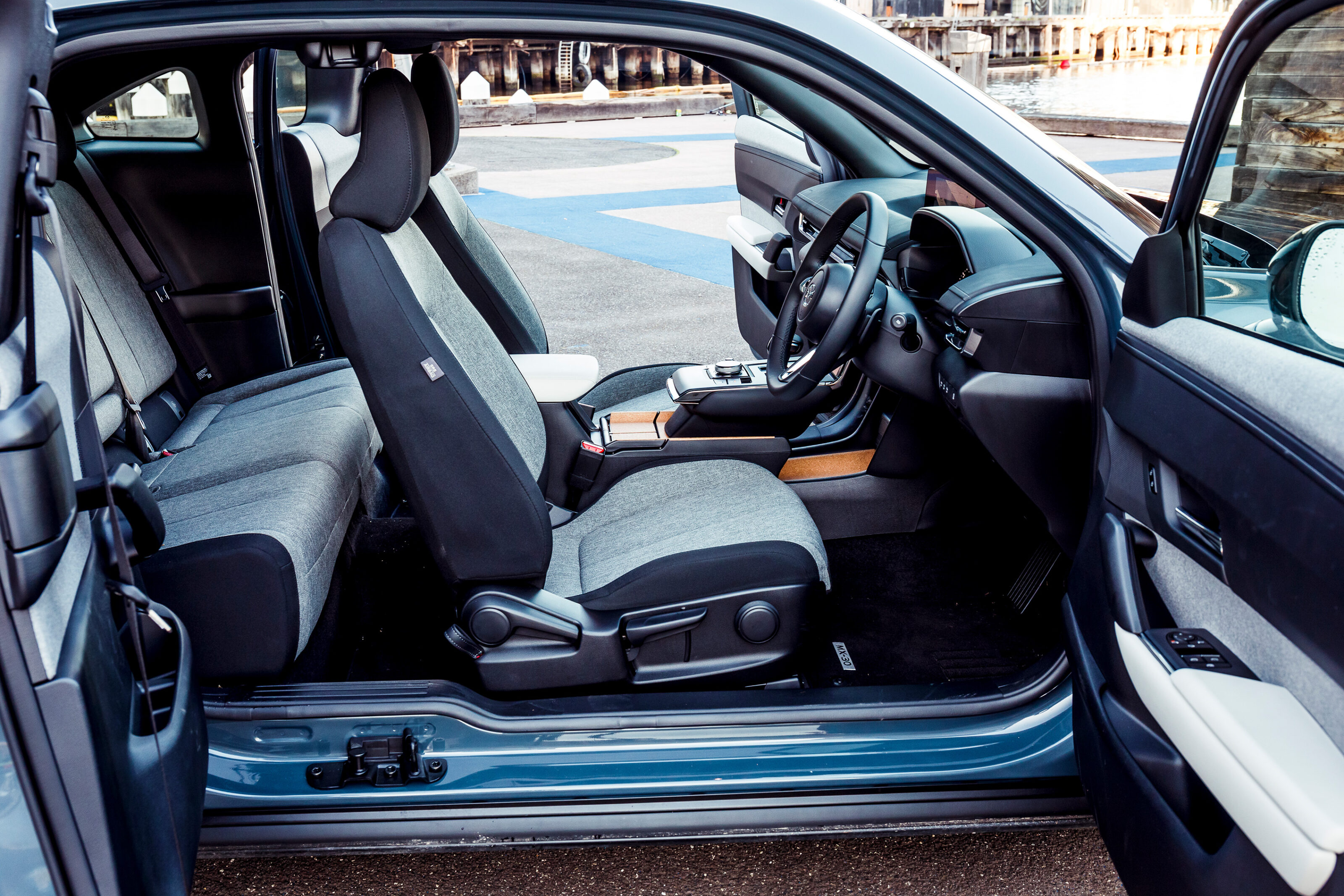
Less subjective however is the interior design where you’ll find not just an unusual layout in the form of a ‘floating’ centre console, terraced dashboard and expansive screens, but the use of unique materials.
Even in the entry level Evolve that we’re focusing on, there is a pleasant felt-like material for the door trims made from recycled plastic bottles and the centre console has a cool cork layer produced using waste from the champagne bottling industry, while higher-spec versions have a synthetic leather called Maztex that uses no nasty solvents but a water-based manufacturing process.
The combination of bohemian fabrics and neutral tones is not unlike a BMW i3 or Mini cabin and another example of Mazda’s departure from convention – including its own.
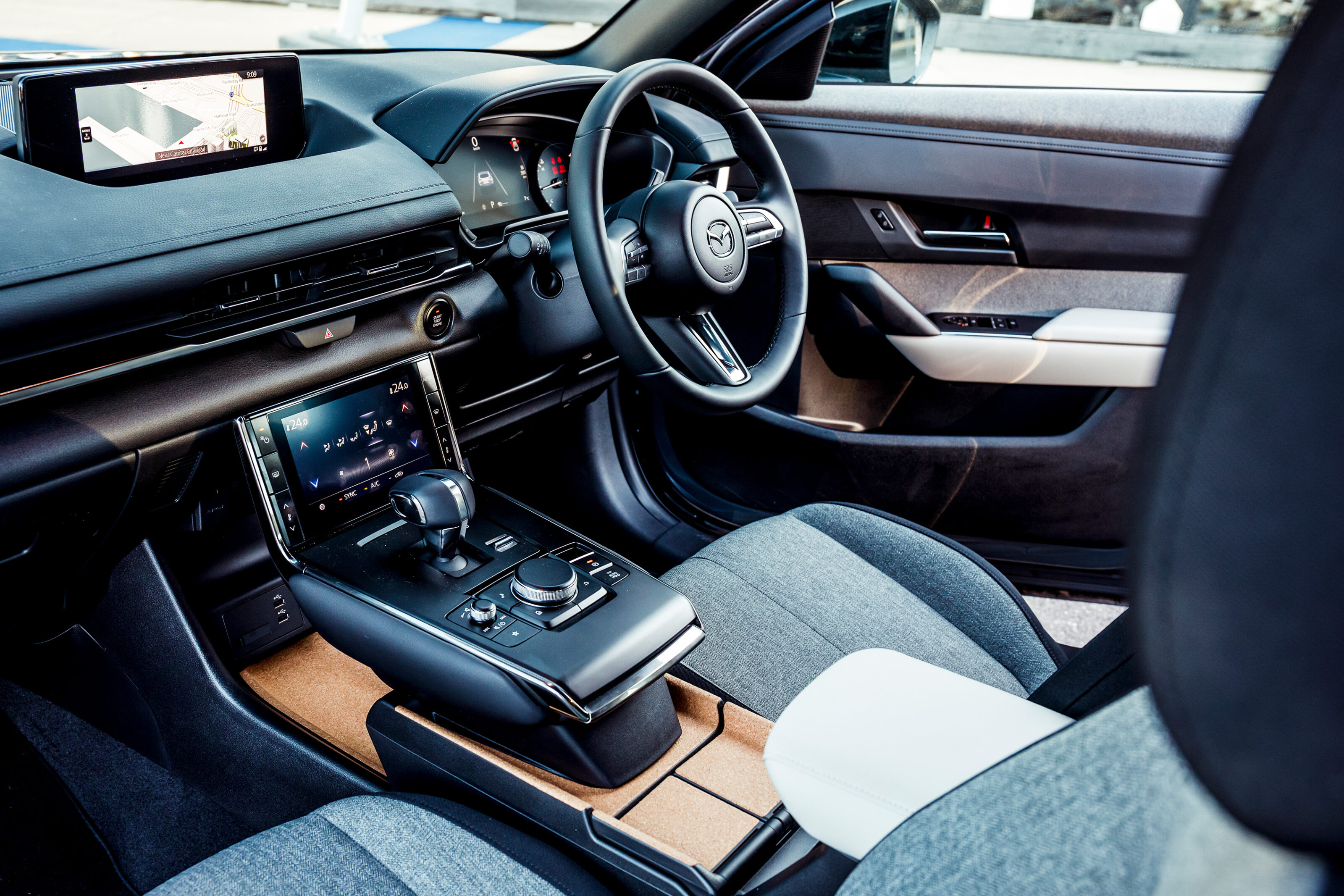
There are more top marks for the level of technology included as standard along with good ergonomics. The main digital display measures 8.0 inches but feels a little short-changed with a much larger surrounding frame – perhaps implying a bigger version will be offered later – but its widescreen proportions work well.
It’s complemented by a beautiful 7.0-inch touchscreen dedicated to climate control functions, while a third screen also measuring 7.0 inches and nestled between conventional analogue gauges provides heaps of information for the driver.
Included in the asking price, it brings smartphone mirroring for both Android and Apple devices, navigation, digital radio with eight-speaker sound system, keyless engine start and an electric park brake.

18-inch alloy wheels are standard to the entire range, as is real leather for the gear selector and steering wheel with paddle shifters.
A 311-litre boot is not massive – especially when you consider the CX-30 with which this car shares a platform (this won’t be the last time we compare the MX with the CX) can swallow up to 430 litres of stuff – nor is the rear seat space which feels a little claustrophobic thanks to tiny rear windows that don’t wind down.
It’s the price paid for those super-cool rear doors that hinge on the trailing edge for a unique design and surprisingly good entry and egress, but they also create another problem that you’ll only realise when up-front.
While forward visibility from the driver’s seat is excellent, the tight spacing of B, C and D-pillars almost completely eliminates an over-shoulder view into the blind spot. A whole plethora of range-wide standard driver assistance kit including blind-spot monitoring, rear parking sensors, camera and cross-traffic alert certainly helps, but is still feels a bit like driving a small van.
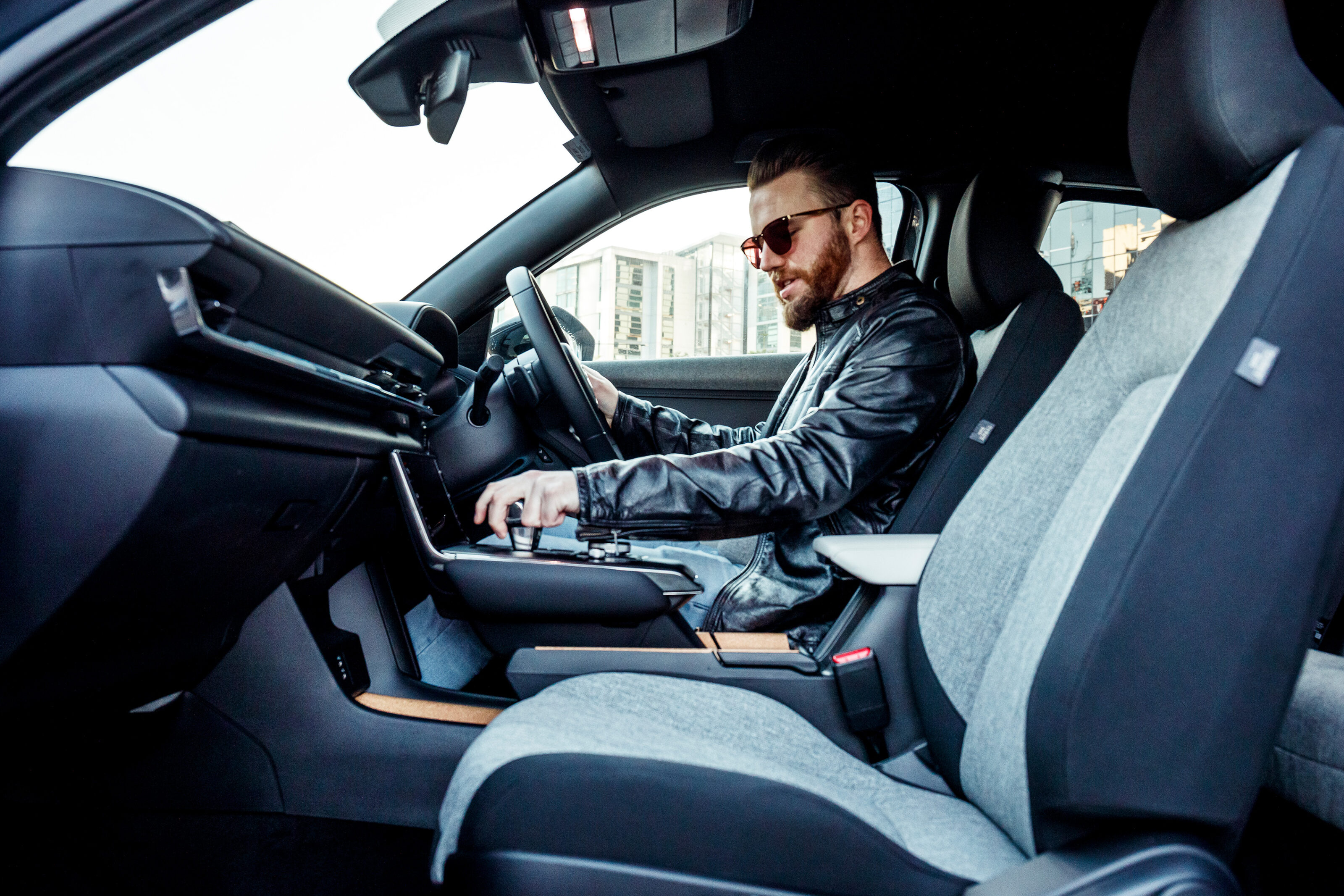
Thankfully, the same can certainly not be said for the rest of the driving experience, with much of the character and nimbleness of the CX-30 translating into the MX-30’s shell. The steering is direct and well-weighted, while the chassis is carefully tuned to return some reward for the more enthusiastic driver without completely compromising on comfort.
On the contrary, emphasis on a quiet and smooth cruising ride appears to have been in favour of corner-carving dynamics which perfectly addresses where this car will spend a majority of its time. Add to that a six-speed automatic transmission that manages to be slick at lower speeds but eager when out of town and the drivetrain is shaping up nicely.
Which brings us neatly to the 2.0-litre naturally aspirated Skyactiv-G petrol engine under the bonnet. It’s the same unit that powers the more affordable Mazda 3 and CX-30 variants with 114kW and 200Nm, with one key difference.
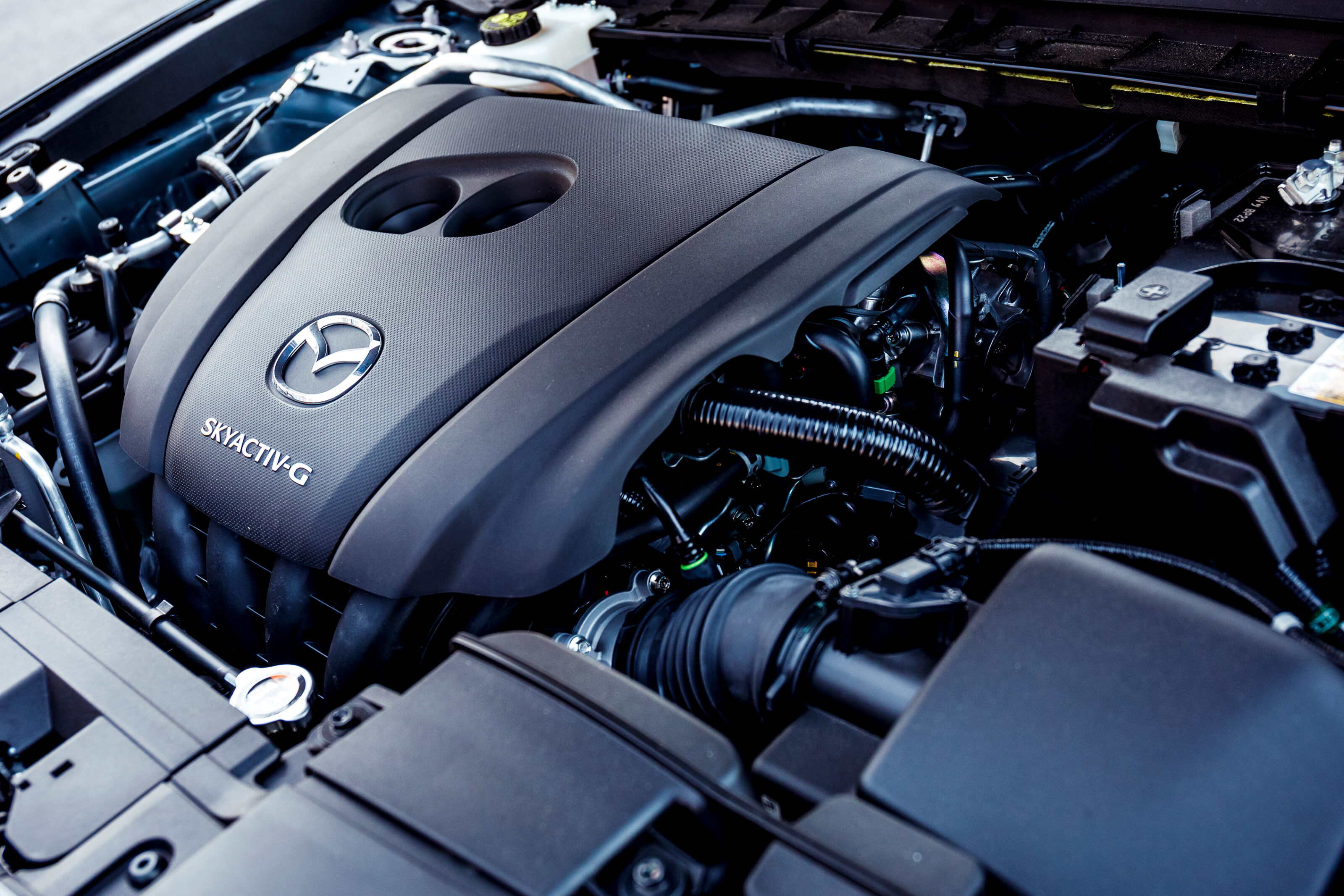
With the addition of Mazda’s M Hybrid hardware, the engine gains the assistance of a 24-volt belt-driven starter/generator for a little added grunt and efficiency. Mazda doesn’t say exactly how much power or torque the system adds back into the mix, but the extra urge is noticeable – sometimes.
Plant the throttle in-gear and there’s an immediate nudge from the electric assistance combined with the responsive four-cylinder, but not consistently. Perhaps the power management system was busy sending electricity elsewhere or we had drained the small battery but the effect isn’t the same each time.
Off-the mark acceleration is more dependable and performance is acceptable if not electrifying. The fuel saving potential is as mild as the electric assistance with an improvement of just 0.1 litres per 100km over the equivalent CX-30’s 6.5L/100km.
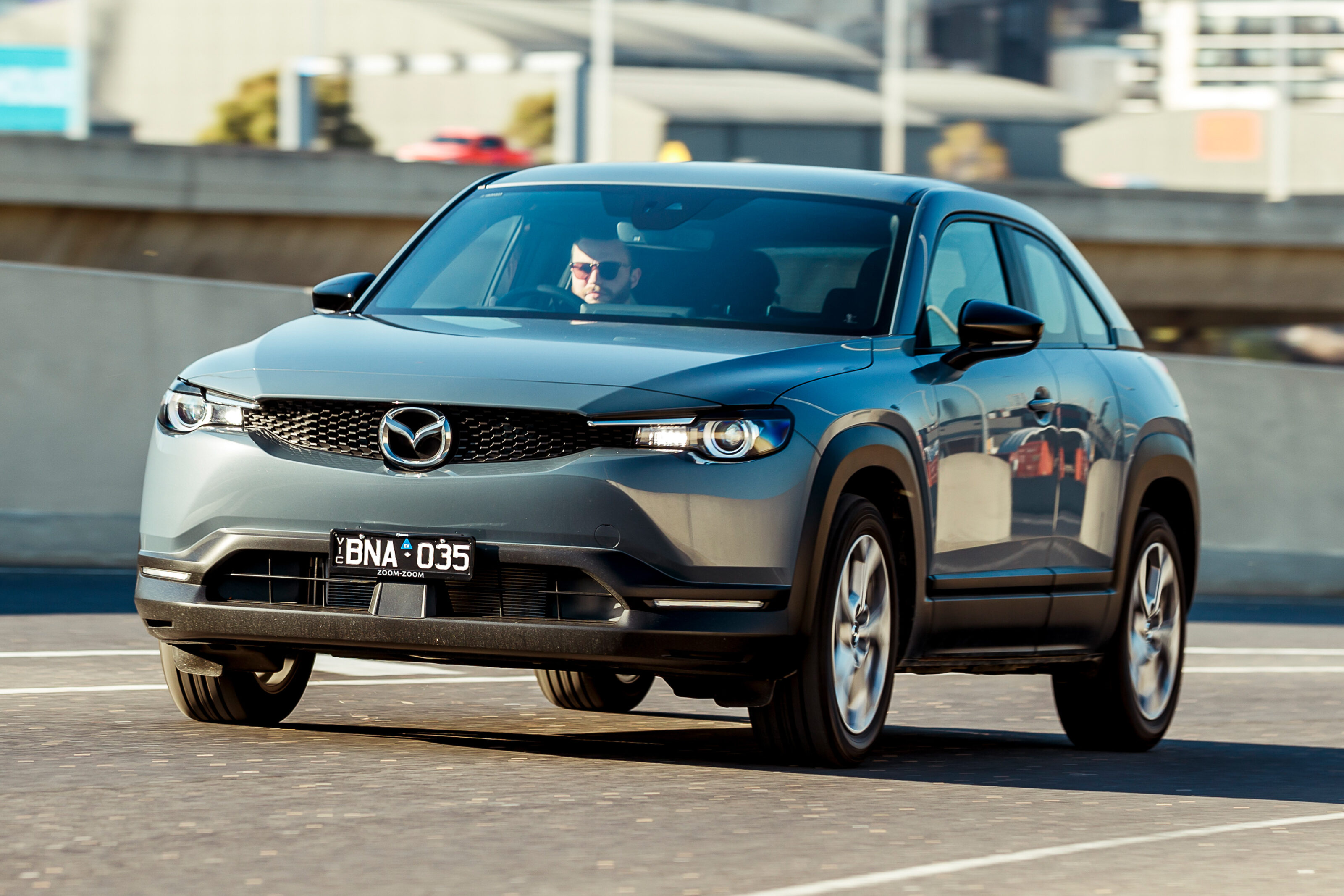
While we’re talking about sibling rivalry, you can buy an all-wheel drive CX-30 and a more powerful 2.5-litre version, while the MX-30 is strictly 2.0-litre front-drive relegating it to the crossover pile whether it likes it or not.
Compared with the CX-30, the MX-30 feels a little practically compromised in the name of style and at a price premium, but there’s not necessarily anything wrong with that strategy – Mini has been making it work since 2000.
There aren’t many other small crossovers that pack this much kit into a package that looks this good. For the same cash you might look at a Peugeot 2008 or Volkswagen T-Roc, but there’s not a lot to compete with in this niche market.
Shopping within the same family, however, it becomes harder to justify the more expensive MX-30 over the 2021 Wheels Car of the Year. Unless you simply adore those looks or absolutely must put a hybrid on your driveway (no matter how mild) you’re probably better off pocketing the $2500 and opting for the latter.
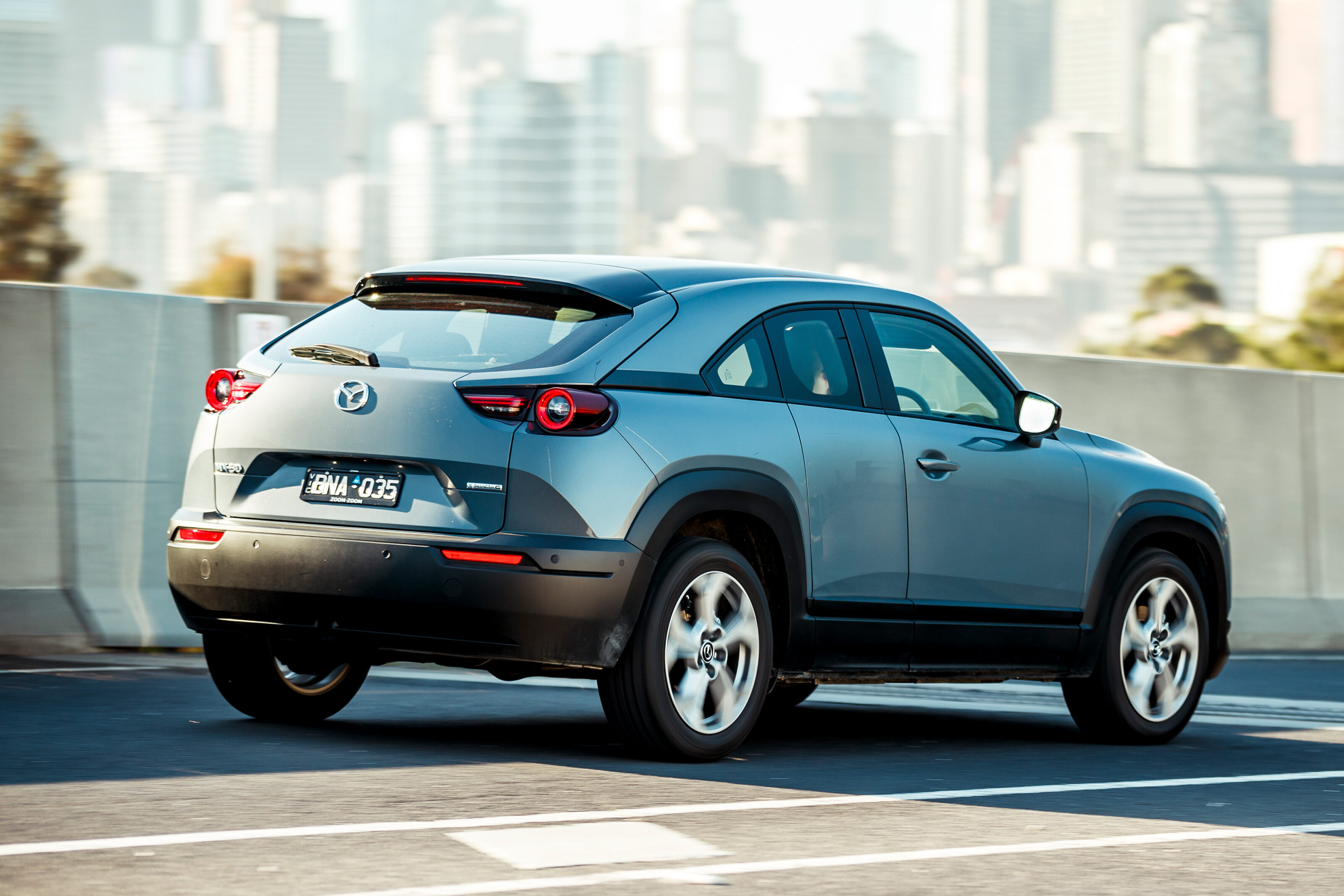
But the first versions of the MX-30 in mild hybrid G20e form are not the versions that will deliver the full-fat shot of MX magic that the company is promising. Mazda is not expecting the newest model to outsell the CX-30, nor will it get even close to the incredibly popular CX-3 compact SUV‘s volumes.
And, beyond the cool styling, it does little ostensibly different or better than the CX-30. In reality, the hybrid MX-30 is a scout, sent to prepare the ground for the main event and get Australia ready for Mazda’s first pure electric vehicle that will arrive in the same pretty package later this year.
Does the MX-30 G20e Evolve honour the MX mantra? Probably not. But with a 107kW/271Nm zero-emissions powertrain in place of the more conventional piston engine, the MX-30 E35 has the potential to be one of Mazda’s most significant new cars in more than 100 years of history.
And that’s before we even get to the rotary powered range extender…
